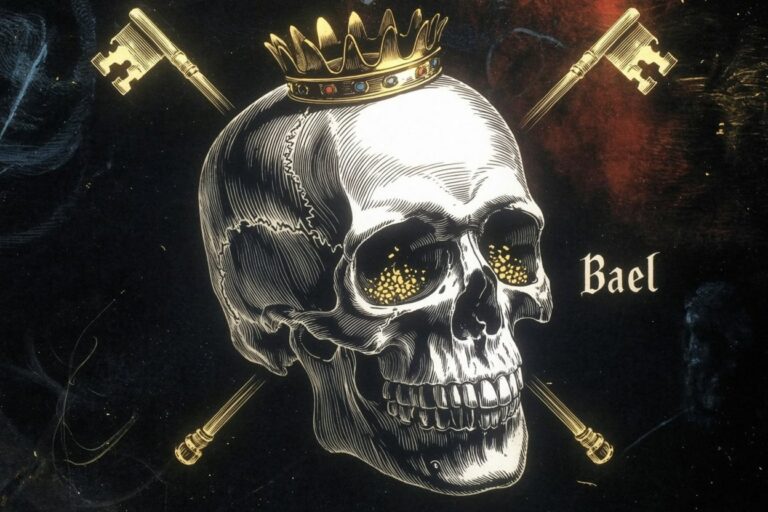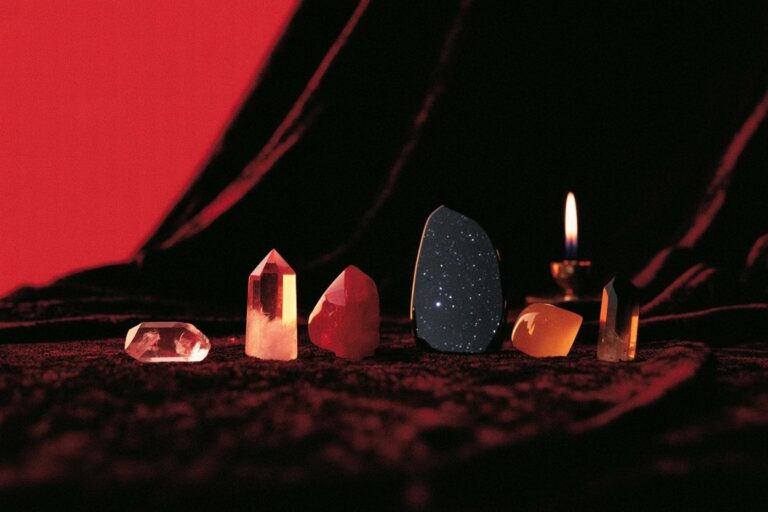Chthonic Deities: Underground Gods Explained
Please note that posts on this site may contain affiliate links
Chthonic deities rule the underworld, earth’s depths, and the spaces between life and death. These underground gods feel completely different from sky deities or ocean spirits when you work with them. The energy shifts from light and expansive to deep, grounding, and transformative.
I learned this the hard way during my second year of practice. I’d been happily working with solar deities and moon goddesses, feeling all that bright, flowing energy. Then I felt drawn to Hades during a particularly difficult period. The moment I made my first offering, everything changed. The air in my ritual space felt heavier, more present. My dreams became more vivid. Magic started working in ways that felt slower but more permanent.
Most witches jump between deity types without realizing how different these energies actually are. You wouldn’t use the same approach with your grandmother as you would with a strict teacher, right? Chthonic deities require their own understanding, their own offerings, and their own respect.

What Makes Chthonic Energy Different
The word “chthonic” comes from the Greek word “khthon,” meaning earth or underground. Classical mythology scholars like Carl Kerenyi documented how ancient cultures universally treated underworld deities differently from their sky counterparts. These weren’t just location differences. The ancients recognized that underground forces operate by different rules entirely.
When you work with chthonic energy, you’re tapping into forces of transformation, boundaries, and deep wisdom. Think about what happens underground: seeds break apart before they grow, minerals form under pressure, and everything moves slowly but powerfully. That’s exactly how chthonic magic feels.
My students often describe their first chthonic experience similarly. “It felt like someone turned down the lights but turned up the intensity,” one person told me. Another said, “Everything got quieter but more real.” The energy doesn’t rush toward you like solar power or flow around you like lunar energy. Instead, it rises up from below, steady and unavoidable.
Historical evidence shows that ancient cultures built different types of temples for chthonic worship. Underground chambers, caves, and deep pits were common. Offerings went down into the earth rather than up toward the sky. Even the timing differed, with many chthonic rituals happening at dusk or midnight rather than dawn or noon.

Core Traits of Underground Deities
Chthonic deities share certain characteristics across cultures, though each maintains their unique personality. Understanding these traits helps you recognize when you’re being called to underworld work.
Transformation stands as their primary domain. Persephone guides the journey from maiden to queen. Hades oversees the ultimate transformation from life to death. The Norse goddess Hel rules the boundary between living and dead. These deities don’t just witness change; they are change itself. When your life feels stuck or you need deep personal transformation, chthonic energy often provides exactly what you need.
Boundary work represents another major chthonic specialty. Underground gods understand limits, borders, and the spaces between things. They know where one realm ends and another begins. This makes them incredibly helpful for protection magic, setting healthy boundaries in relationships, or understanding your own limits. I’ve found them particularly effective when dealing with toxic people or situations that require firm boundaries.
Wealth and abundance flow through chthonic channels differently than celestial ones. Think of precious metals and gems forming deep underground over thousands of years. Chthonic abundance builds slowly but lasts. Plutus, Hades, and similar deities can help with long-term financial stability rather than quick windfalls. Their approach to prosperity focuses on building solid foundations rather than flashy gains.
Justice through chthonic deities carries a weight that sky gods don’t match. The Furies, Nemesis, and similar figures understand that some actions have underground consequences. They work on deeper timescales and don’t forget. When someone has wronged you and regular justice seems impossible, chthonic deities offer another path. They’re patient but thorough.
Death and rebirth cycles connect all chthonic work. Not necessarily physical death, but the death of old patterns, relationships, or versions of yourself. These deities understand that sometimes things must end completely before new growth becomes possible. They’re excellent allies during major life transitions, divorces, career changes, or any time you need to let go of who you used to be.

How Chthonic Work Differs From Celestial Practice
Working with underground deities requires adjustments to your usual magical approach. The differences start with timing and energy, then extend into offerings and expectations.
Celestial deities often work quickly. Solar gods bring immediate energy and clarity. Lunar goddesses flow with monthly cycles. Storm gods create rapid change. Chthonic deities operate on geological time. Their magic builds slowly, layer by layer, until change becomes inevitable. Don’t expect instant results, but do expect lasting ones.
Energy direction reverses when you work chthonically. Instead of raising energy up or drawing it down from above, you’re pulling power up from below or sending intentions down into the earth. I’ve noticed this particularly during offerings. With sky deities, I send prayers upward. With chthonic gods, I speak downward into the ground or into bowls placed on the floor.
The emotional tenor shifts dramatically. Celestial work often feels uplifting, energizing, or expansive. Chthonic work feels grounding, intensifying, or deepening. You might feel more introspective afterward rather than energized. This isn’t negative; it’s just different. Some people find chthonic energy more comforting because it feels solid and reliable rather than changeable.
Offerings change completely. Sky deities often appreciate incense, flowers, or things that rise upward. Underground gods prefer offerings that go into the earth: libations poured onto soil, buried items, or food left to decompose naturally. Many chthonic deities appreciate darker offerings: red wine instead of white, dark bread, rich foods, or items associated with death and transformation.
Your ritual space needs different preparation. Bright lights and airy spaces suit celestial work perfectly. Chthonic rituals work better with dimmer lighting, candles, or work done directly on the ground. I often work chthonically in my basement rather than my usual ritual room upstairs. The lower energy feels more appropriate.

Beginner-Friendly Chthonic Deities
Starting chthonic work doesn’t require jumping straight into the most intense underworld energies. Several deities offer gentler introductions while still providing authentic chthonic experiences.
Persephone bridges upper and lower worlds beautifully, making her perfect for beginners. She understands both realms and can help you adjust to chthonic energy gradually. Her spring aspect feels familiar to people used to growth-oriented magic, while her queen of the underworld aspect introduces deeper mysteries. Start with pomegranate seeds, spring flowers, or dark chocolate as offerings.
Hades, despite his fearsome reputation, actually works wonderfully with respectful beginners. He’s incredibly fair and protective of people who approach him honestly. His energy feels stable and trustworthy once you adjust to the intensity. Many people find him easier to work with than some supposedly “nicer” deities because his expectations are clear and his rewards are reliable.
Hecate spans many realms but has strong chthonic connections through her role as psychopomp and crossroads guardian. She’s excellent for anyone interested in divination, protection, or magic itself. Her triple nature means she understands beginners, intermediate practitioners, and advanced workers equally well. Offerings might include keys, garlic, honey cakes, or crossroads dirt.
From Norse traditions, Jormungandr the World Serpent represents chthonic energy in a more primal form. This massive serpent encircles the world at the ocean’s bottom, connecting water and earth elements. Jormungandr understands cycles, boundaries, and the power that comes from embracing your true nature rather than fighting it.
The Roman goddess Proserpina (Persephone’s Roman counterpart) carries slightly different energy than her Greek version. She feels more practical and down-to-earth, making her accessible for people who prefer Roman deities or need more structured approaches to transformation work.
If you’ve been feeling drawn to deeper, more grounding magical work lately, or if your usual bright and airy practice isn’t hitting the same way anymore, you might be ready to explore what lies beneath. Chthonic deities don’t demand dramatic personality changes or dark aesthetics. They simply ask for respect, patience, and willingness to grow in directions you might not have expected.

Full Moon Witchcraft: Traditions, Correspondences, and Rituals for Beginners
Embrace the mystical power of the full moon with ‘Full Moon Witchcraft: Traditions, Correspondences, and Rituals for Beginners‘ for only $4.99—unlock lunar energy to enhance your spellwork and magical practice.






